Yamaha Tracer 9 and Tracer GT 2021 road test and review
SINCE 2015 the Tracer has been the sensible one in the otherwise lairy Yamaha MT family, with the GT model adding a bit more sophistication alongside it since 2016.
.jpg?width=1600&aspect_ratio=16:9)
SINCE 2015 the Tracer has been the sensible one in the otherwise lairy Yamaha MT family, with the GT model adding a bit more sophistication alongside it since 2016.
New 2021 Yamaha Tracer 9 and Tracer 9 GT Revealed
They’re important models for Yamaha, with nearly 65,000 units shifted since the first Tracer was launched. That’s given the Tracer and GT a 44% share of what Yamaha (and probably no one else...) describes as the ‘Upper Mid-sized Versatile’ segment of the market.
For 2021 the whole MT-09/Tracer/GT platform was due for an update to hit new Euro 5 norms, and rather than tweaking what was already there, Yamaha have gone for a complete ground-up revision - new frame, heavily modified engine, and more tech than you could shake a stick at.
We’ve already ridden the MT-09, and liked it a lot, but how do the new Tracer 9 – and the higher spec Tracer GT - shape up? Only one way to find out – let’s go for a ride...
.jpg?width=1600)
Price and rivals
At £10,199 on the road, the standard Tracer 9 is about a grand more than the MT on which it’s based, which is about what we expected. The Tracer GT is £12,199 on the road - the two grand gap seems like a lot at first glance, but if you added all the GT’s bells and whistles to the Tracer 9 as optional extras, they’d add up to a lot more than that (just the panniers and racks would be over a grand at full retail). So, you pays your money and you takes your choice. Or more accurately these days, you organises your PCP deal and you they take a pre-authorised amount of cash from your account. Lay down around three grand as a deposit, and over 36 months you’ll be paying £109 a month for the Tracer 9, and £129 for the GT.
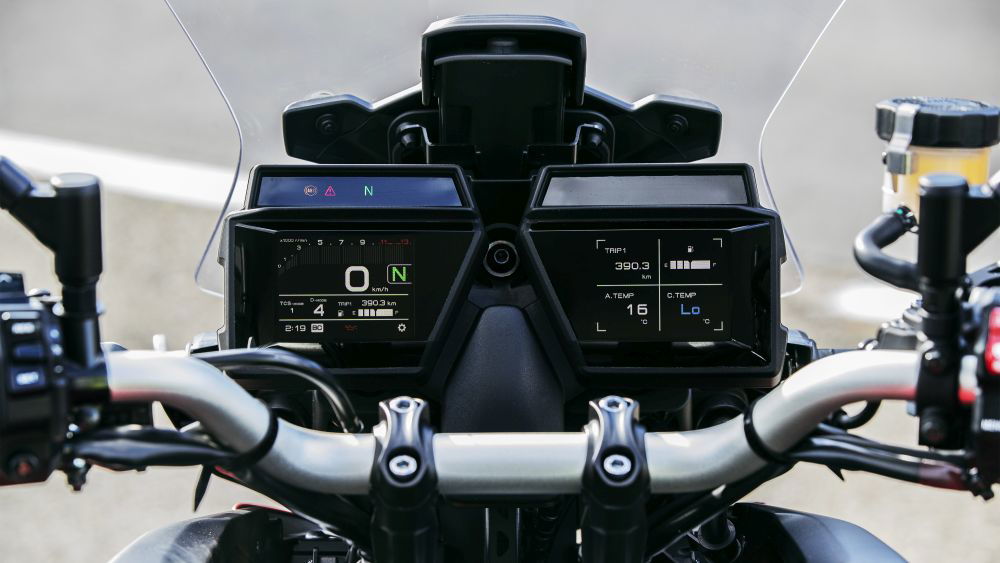
Probably the closest direct rivals to the Tracer 9 and GT are Triumph’s Tiger 900 GT and GT Pro. Conveniently for comparison purposes, they’re new triples (888cc to the Tracers’ 889cc – they even share more or less the same bore and stroke), similar weights, with two comparable levels of spec, and aimed at a broadly similar audience – experienced riders wanting the best of big adventure bikes (toughness, comfort, long distance and two-up ability and good ride quality) without the downsides (huge seat heights, high running costs, unwieldy parking and maneouvrability).

The Tracers have a bit more torque, but a fair bit more power – the Triumphs peaking at around 94bhp next to the Yamahas’ 117bhp. Unless you’re using the top third of the rev range all the time though, they’re broadly similar on real-word performance. The Tiger 900 GT has cornering ABS and traction control, cruise control and a single 7in TFT screen vs the Tracer 9’s twin 3.5in displays. It has heated grips as standard as well, which the Tracer 9 lacks, and a useful couple of litres extra fuel capacity. At £11,400 it’s a fair whack more than the Tracer 9’s £10,199, but it’s arguably better finished, and has better quality suspension as standard.
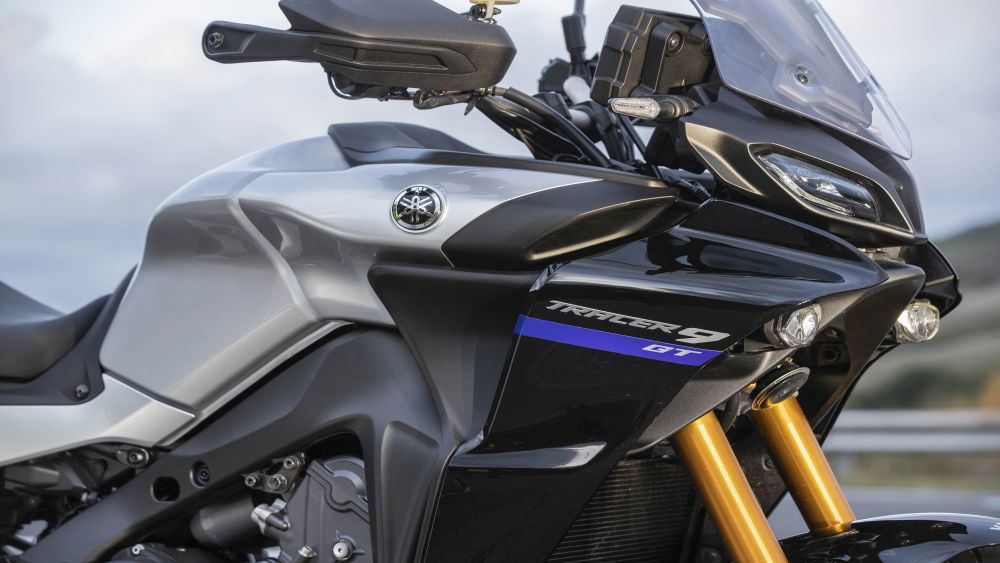
The Tiger GT Pro is closer in spirit to the Tracer GT. It takes the standard GT spec and adds smartphone connectivity, a centre stand, LED lights, a quickshifter and heated grips. It has electronic semi-active suspension, but only at the rear. On the other hand, it has a tyre pressure monitoring system and heated rider and pillion seats as standard. At £13,100 it’s 900 quid more than the Tracer GT.
.jpg?width=1600)
Engine
It’s basically straight from the MT-09, which we covered in depth when we rode it a couple of weeks back. But let’s a have a quick recap. At first glance the engine looks the same, but under the skin it’s heavily updated. The most obvious change is clear from a quick glance at the spec sheet - an extra 3mm on the stroke to take capacity up by 42cc to 889cc. Mo’ cubes is always a good strategy, especially when emissions rules are stifling your options to make more power by other means. That longer stroke gives a slightly less manic feel to the engine, as mentioned above, and it’s aided by a significantly heavier crankshaft, which gives more of a flywheel effect to the engine, making it a bit less snappy than before.

It also probably helps with vibration and underlying noise. Revised camshafts also contribute to the change in torque peaks. There’s plenty more going on in the bowels of the motor though. New, lighter pistons are joined to that crankshaft by connecting rods that are each cast in one piece before being snapped to make a two piece bearing to bolt round the crank (this allows a lighter casting, and fewer machining processes).
.jpg?width=1600)
The fuel injection system is heavily revised, with new injector banks squirting fuel more or less directly onto the tops of the intake valves, rather than further upstream in the inlet tracts. This is claimed to improve fuel atomisation and reduce the amount of fuel that resists combining with the incoming air and simply ‘sticks’ to the intake tract wall. The final link in the dynamic chain is a change in gear ratios for first and second, both of which become slightly talller, to damp out the previous model’s often criticized snappiness from low revs in low gears. Before I forget, the clutch is revised too, for a lighter lever feel and less of a clunk on downshifts.
.jpg?width=1600)
With an extra 42cc over the outgoing Tracer models, you might expect the new one to have more power and torque. You’d be right, but there’s not a lot in it as far as power’s concerned, with around 3% more shove at the top end. Left to their own devices, no doubt Yamaha’s engineers could have gleaned more than that, but the new bike has to hit the new and much stricter Euro 5 emissions and noise regs, so that’s meant they’ve had to compromise. Of more interest than the power though, is a significant torque increase – a claimed 6% extra, which also comes in around 1000-1500rpm lower down the rev range.

Peak torque is now around 7000rpm but you’ve got a wide range, with significant shove from as low as 4000rpm. That makes the new engine much more flexible – you don’t need to chase high revs to make quick progress and you’ve always got good drive from relatively low down. All of that is identical between MT and Tracer. In addition, Yamaha say there’s absolutely no difference in the engine mapping or anything else either. So it’s a bit of a surprise to find it feels.. not completely different, but different enough to make you think there must be something else going on.
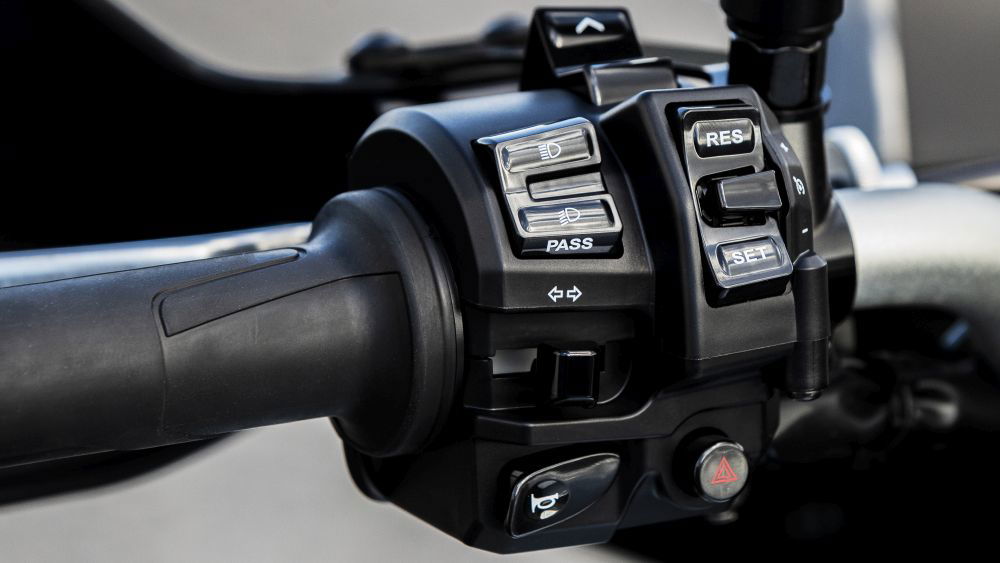
It’s still plenty powerful enough to have a lot of fun, and grunty enough to ride like a big scooter if you wish, but where the MT is snappy, eager and always trying to wheelie under hard acceleration (think boisterous puppy jumping up at you all the time), the Tracer feels more controlled, slightly muted (like the same dog a few years later, still up for chasing the ball but not quite so exuberant). It still pulls hard, no question, but it felt to me as if it had been geared up slightly, and it would have made perfect sense for Yamaha to have trimmed a couple of teeth off the rear sprocket or added a tooth at the front – it would give more relaxed cruising, for a start.
.jpg?width=1600)
But Yamaha say the gearing’s identical between the MT and Tracers, so it’s not that. Maybe it’s the extra weight – 24kg is not an insignificant amount extra to haul around – but I think it’s also the longer wheelbase making it a bit more stable and bit less wheelie-prone. There’s also a difference in sound and feel – less raucous, less buzzy, more refined and smooth – which I suspect is down partly to the extra mass damping out some vibrations, and partly the larger fuel tank and extra bodywork muting some of the intake noise which is such a feature of the MT. Whatever the reason, the Tracer is notably more civilised in both noise and performance than the MT, which is as it should be - even drive Mode 1, which is pure hooligan on the MT, is more manageable on the Tracer.
.jpg?width=1600)
Yamaha claim the new Tracer has exactly the same theoretical fuel consumption as the MT, at 5 litres per 100km, which equates to about 56-57mpg. We didn’t get a chance to verify that on our 150km loop, but since we were mostly ragging it in lower gears on super-twisty roads it wouldn’t have been representative anyway. Under similar conditions the MT-09 averaged about 42mpg, which wasn’t bad for that sort of use, and I reckon it should be easy enough to get a reliable 50mpg out of the Tracer, and maybe more. With the Tracer having a slightly more useful 18 litre fuel tank (against the MT’s 14 litres), that would give you a range of around 175 miles till you were down to your last couple of litres (there’s no mechanical reserve switch, just the fuel gauge and countdown on the dash). It would still be nice to have a bit more range though.
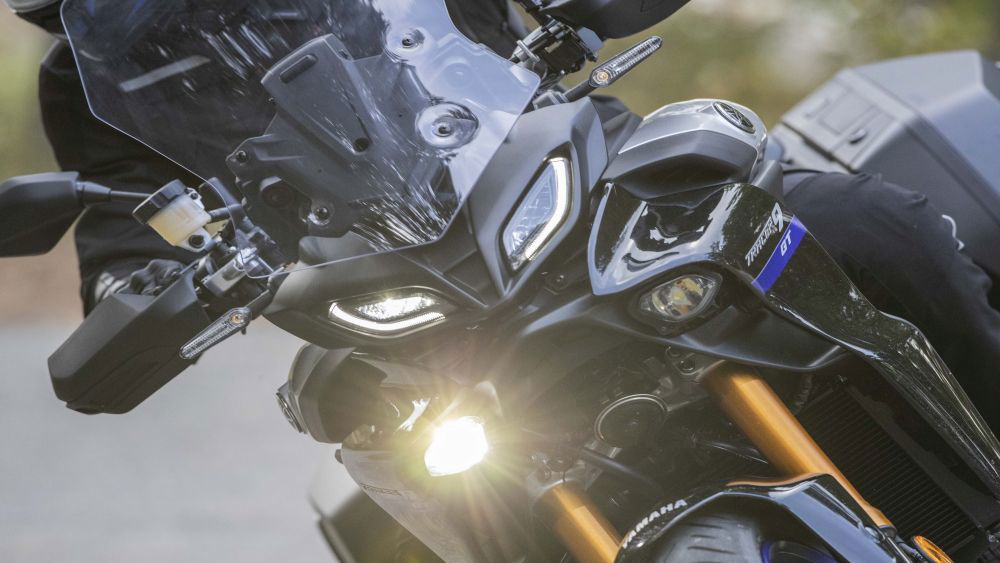
Suspension/brakes/handling
Here’s where we have to start differentiating between the base model Tracer 9 and the GT. Standard Tracer 9 first. At first glance it’s the same set-up as the MT-09, with 41mm upside down forks and rising rate monoshock, bolted to a new chassis made by an innovative die-casting method which allows very thin walls where possibly (just 1.7mm in places) but adds extra material where needed for stiffness (claimed to be 50% stiffer laterally than the old chassis. The swing arm looks the same as the MT but is actually 70mm longer, for more stability (and fewer wheelies - booo), and the wheels are the same ‘spin-forged’ design which is claimed to allow lighter weight, thinner sections (2mm at the thinnest point of the rim, where double that would be more usual) and lower manufacturing cost. There is one significant – and slightly puzzling – difference though. The MT has fully adjustable forks, with rebound and compression being tweaked by adjusters on the tops of the right and left forks respectively, and preload adjusters both sides. The Tracer 9 has the preload adjusters, and the rebound adjuster on the right, but no compression adjuster on the left.

I can’t imagine this would represent a significant production cost saving, so it’s a bit of a mystery really. Fortunately the standard settings are pretty good for general riding. The forks have a pretty good feel in most situations, and you get decent feedback from the front tyre which was welcome on the test ride, where we were barelling into unknown corners on dusty, chilly tarmac. The rear shock’s the same as the MT’s (although possibly with different settings due to the longer swing arm and extra weight) and it’s ok most of the time, although both the shock and forks tend to be overwhelmed by bigger bumps, especially when you hit two or three in sequence. This isn’t uncommon with budget suspension that often has relatively soft springs for ride quality/comfort, and compensates with extra damping which only operates well within a fairly limited range. In summary it’s ok, but it could be better. If I were a Tracer 9 owner, I’d be looking at aftermarket options for a new rear shock once the original gets a bit tired. Preferably one with a rear preload adjuster, as the longer swing arm accentuates the MT’s tendency to flop a bit at very low speeds – a little more ride height would almost certainly help with that, and no one needs to lose knuckle skin wrestling with a shock-mounted preload collar if they can avoid it.
.jpg?width=1600)
Now then, on to the Tracer GT. New for this year is KYB semi-active suspension front and rear. It’s not the most sophisticated system in the world – it doesn’t alter preload, for example, just damping – but it’s still a nice touch, and gives a plusher ride than the Tracer 9’s budget set-up, while also working better over a wider speed range. The system takes data from suspension travel sensors as well as from the IMU, and uses it to alter damping rates front and rear in real time. If you’re expecting some kind of magic carpet ride, then you might be disappointed – big bumps still get through, although without the jarring crash you get with the standard bike over really big hits. Within those limits though, it effectively smooths out all the rough edges, and especially the smaller imperfections in the road that you don’t really notice until suddenly they’re not there. Going from standard Tracer 9 onto the GT is like going from old gravel-dressed tarmac to a nice freshly-laid surface, as if someone’s going ahead of you, sweeping and rolling and smoothing your way.
.jpg?width=1600)
It’s a slightly strange feeling, to be honest, and at first it seems to reduce tyre feedback, but as soon as you start throwing it around you realise that’s an illusion – my first go with the GT was for photos, so no warming up, just straight into a corner, and straight to peg-scraping lean, no problems – it works. As mentioned, that competence doesn’t extend to changing preload settings, so there’s no touch-of-a-button swap from solo to 2-up as you get with more sophisticated versions (although you can switch from sports to comfort modes as you wish). What you do get is an easy-access remote manual preload adjuster for the rear shock. I experimented with a bit more ride height to try and reduce the slightly vague low speed steering I’d noticed on the Tracer 9, and it did seem to help. I reckon for a pillion and/or a lot of luggage, you’d want to wind the rear shock up close to maximum.
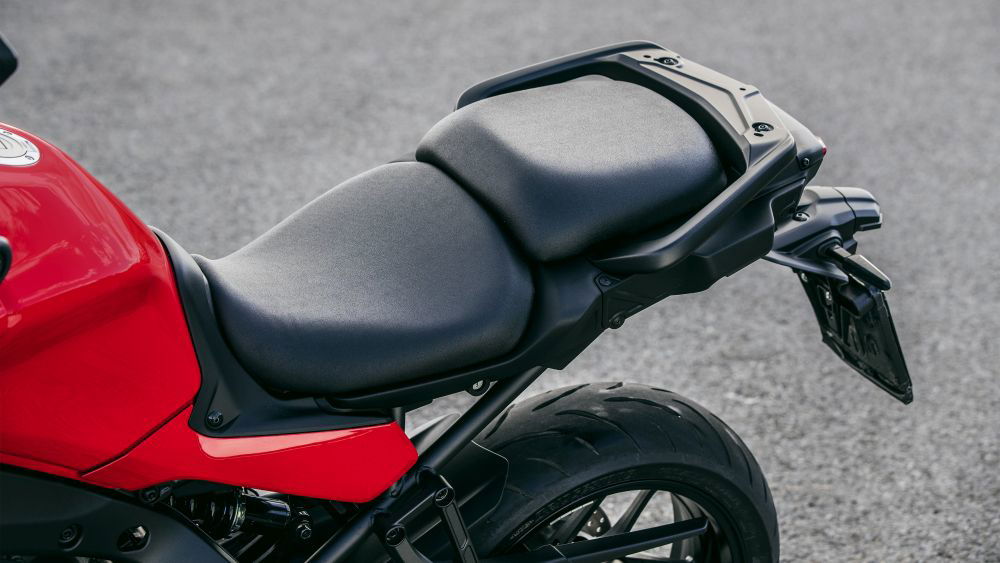
Speaking of pillions and luggage, the Tracer’s new rear subframe is significantly beefier than before, which goes some way to explaining the Tracer’s extra weight over the MT. It’s worth the penalty though, as the max load weight (rider/pillion/luggage combined) goes up to a useful 193kg. It also allows for the use of panniers and top box at the same time, where the old model was only specced for one or the other. Don’t get too carried away though – by the time you’ve got two fully kitted people on board, that’s going to have used up most of that 193kg, so you’ll still need to pack light.
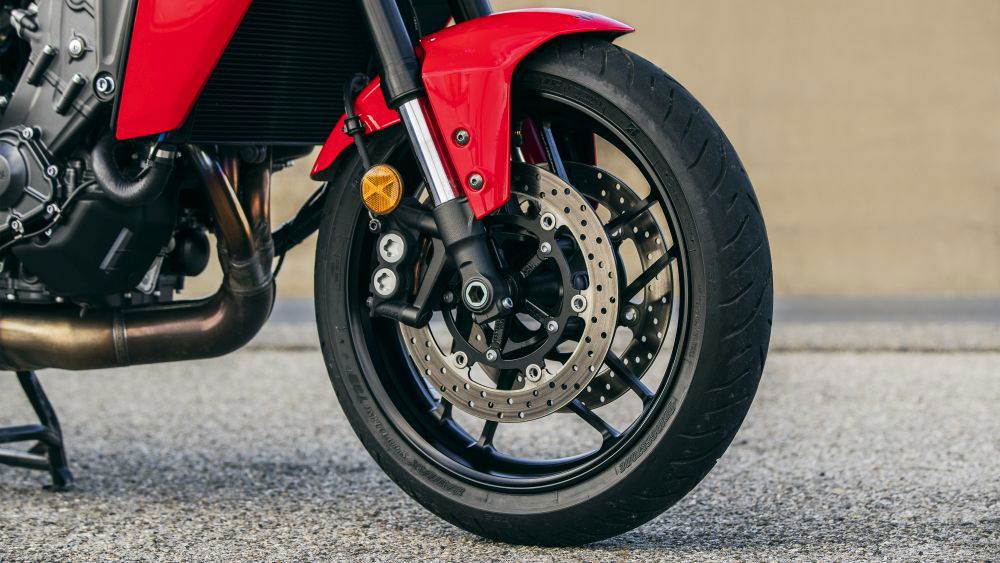
The brakes are the same as the MT-09, with radial four-pot calipers up front matched to a radial master cylinder pinched from the R1 Superbike, and a simple two-pot caliper at the rear. The front brakes are strong, with a decent amount of feel, allowing you to trail brake deep into bends should you wish. Like the MT some riders will find the feel at the lever a bit soft, but I like that for the road – it helps give you that fine control, especially over bumpy surfaces where feel for the lock-up point is more important than outright power. If you don’t like it, a harder feel at the lever is only a set of braided hoses away.

On the subject of locking up, the ABS is subtle and unobtrusive at the front, but still a bit eager to cut in at the rear, although less so than on the MT-09, thanks presumably to the longer swing arm and extra weight of the new rear subframe. Happily, I didn’t need to try the cornering ABS – and if you’d seen the giddying, rocky drops by the sides of the roads we were riding (particularly the RD952 along the Gorge du Verdon – Google it, and then go and ride it one day. You can thank me later...) then you’d have been happy not to push your luck too...

Out of our 150km test ride, I don’t think there was more than about 1km of straight and level riding – it was a struggle to find an opportunity to test the cruise control for more than a few moments, let alone get into a long-distance slouch and see how long you could sustain it - so any comments on the subject of comfort have to be viewed with that in mind. That said, the riding position felt perfectly natural for me (5ft6in on a good day), with enough leg room and a comfortable reach to the bars. The footrests are adjustable by shifting to an alternate set of mounting holes, which raises them 14mm and moves them back by 4mm. I doubt taller riders would fancy that, and although it was easy to get a scrape from the hero blobs in bends, otherwise ground clearance is good, so I’d leave them where they are. As well as moving the bars in the clamps to swivel them back and forward, you can also rotate the clamps themselves to push the bars 9mm forwards and 4mm up.
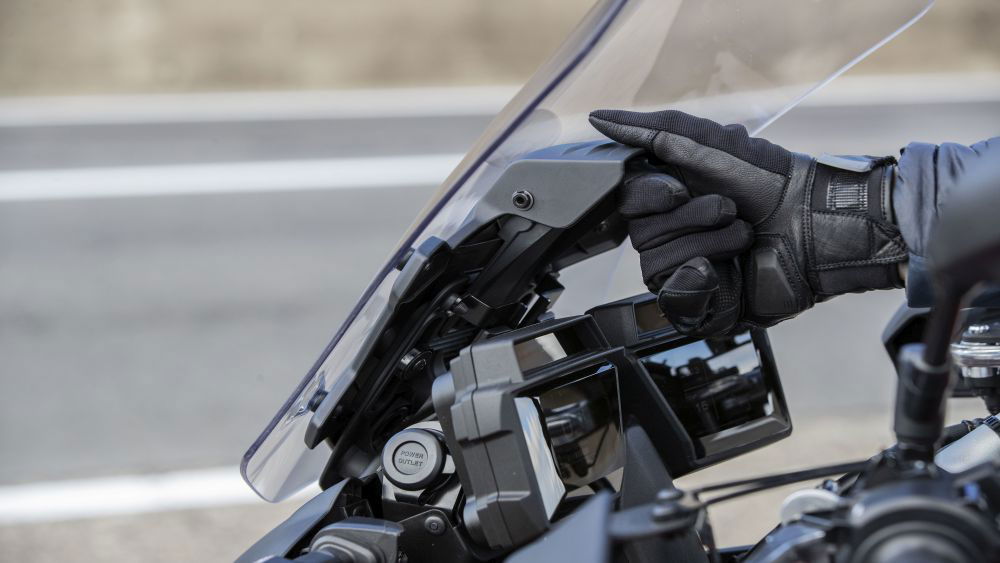
The seat’s more cossetting than the MT-09’s rather spartan offering, and you feel more like you’re sitting ‘in’ rather than ‘on’ the bike. The GT’s version is a little plusher still, a bit more supportive and grippier. There’s also an even plusher comfort version available for any haemorrhoid suffers out there. You have the option of two positions – standard is 810mm off the floor, with 825mm available by re-jigging a few spacers (and finding another home for a fiddly filler piece between the seat and tank).
There wasn’t any opportunity to try the pillion accommodation, but the seat is bigger and thicker than the old Tracer, and the grab rail’s bigger too. To give you some idea how pillion-friendly it is, part of the photoshoot involved following another Tracer, at 40-50mph along a peg-scrapingly twisty road, with the photographer sitting quite happily hands-free on the pillion as he snapped away. Sounds normal enough, except he was sitting backwards...

Equipment
As with the engine, pretty much all the rider aids are carried over directly from the MT-09, although there are slight differences between Tracer 9 and GT specifics. Taking the Tracer 9 first, it has cornering ABS – which is switchable although I doubt most owners will ever want to do so. It also has lean-sensitive traction control (TCS), but added to that it has slide control (SCS), which isn’t quite the same thing, and it also has an ‘Anti-Lift’ system to help keep the front wheel on the floor more of the time under hard acceleration.
.jpg?width=1600)
The thing that makes all that work is a 6-axis Inertial Measurement Unit (IMU), based on the one fitted to the R1. The IMU is a clever little black box which takes data from sensors measuring the bike’s movement from front to rear, left to right and up and down. Not just movement either, but the speed of that movement. It uses that data – sampled 125 times every second - to tailor the ABS, traction, slide control and lift controls to real-time conditions.
.jpg?width=1600)
You have a choice of 4 different engine modes (Mode 1 is full power and sharpest delivery, through to Mode 4 which makes it feel like it’s only using two out three cylinders) and three rider aid modes (TCS 1, TCS 2 and Manual), all accessed via the left hand switchgear. TCS 1 is lowest intervention on all aids, TCS2 ramps it up a bit, and Manual allows you to tailor the whole lot to your tastes, with a choice of three intervention levels for each, plus the option to turn the Slide Control and LIF off while keeping some Traction Control. There’s also an option to just turn the whole lot off, although I suspect few riders will do so. Manual mode settings are accessed via a scroll button on the right bar giving access to a sub-menu on the left hand TFT screen – once you’ve done it once, it’s easy. The right hand screen shows four parameters including fuel consumption, range, etc (you get to choose which you want to prioritise) in a nice, clear format, while the left hand screen takes care of all the ‘normal’ info – speed, revs, engine temp, modes, fuel level etc. There’s a fair bit of customisation available.
.jpg?width=1600)
As previously mentioned, the GT adds to this with a pair of options for the semi-active suspension – A1 for a firmer, sportier feel, and A2 for a more comfortable ride.
The Standard Tracer 9 doesn’t get the MT-09’s up/down quickshifter (the GT does), but both bikes get a cruise control as standard, easily set using the same buttons on the left bar which control the engine modes. Modes are only acessed at a standstill, cruise only above 50kph/30mph, so it makes sense for the buttons to multi-task.
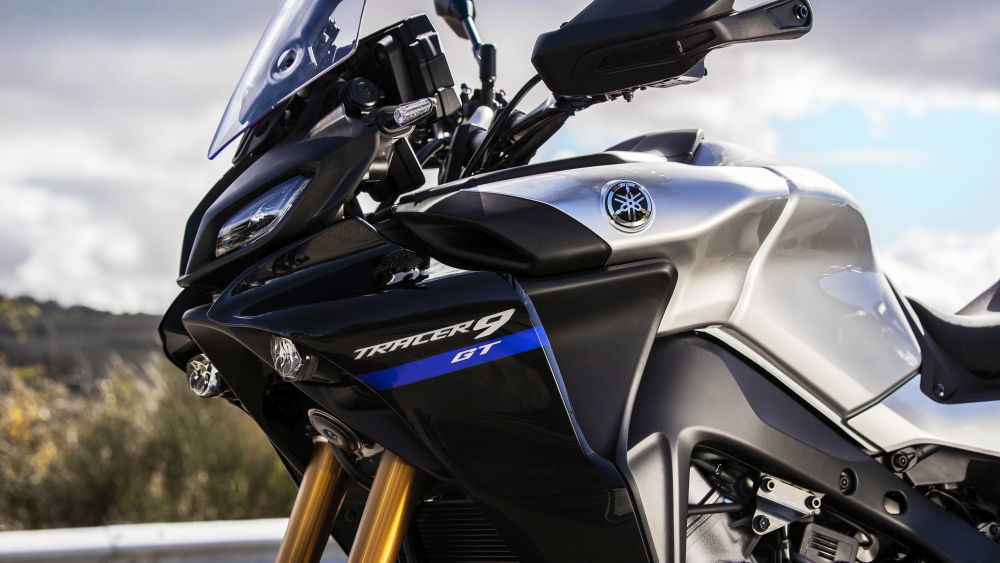
Both bikes come with handguards as standard, which do help a bit, but the GT has heated grips as standard too and they’re seriously effective. There are ten heat settings (controlled with the scroll wheel on the right switchgear) but with summer gloves on a chilly March morning I found anything over number five was overkill. While I remember, both Tracers have centrestands as standard – and they’re easy to use.
.jpg?width=1600)
What we liked about the new Tracer 9 and Tracer 9 GT
- Comfort, reasonable range, practicality
- Brilliant, torquey triple engine
- Lots of tech, but still lots of fun
What we didn’t like
- Limited steering lock
- Budget suspension on Tracer 9
- Fiddly seat adjustment
.jpg?width=1600)
Verdict
If you liked the older model Tracers, then you’ll like these, no question. You’re getting the same recipe as before, with a bit of added spice in the shape of more torque and more tech. They’re both genuine all-rounders, equally suited to daily commuting, weekends away or longer two-up trips. And they wouldn’t disgrace themselves (or you) at any twisty trackday either. So there’s a lot to like, and not that much to criticise. I’d have liked a bigger fuel tank (I think anything with touring pretensions should have an easy 200 mile range) and the low speed steering is a little vague on standard settings, but I can live with that. So the question is which one to go for. I’m not exactly tech-phobic, but although the GT’s semi-active suspension is good at what it does, I think I’d probably go for the standard bike and invest in a decent rear shock and a professional fork rebuild to suit my riding style. Same with the rest of the GT’s standard bits – I can take or leave the quickshifter, and I’d probably go for aftermarket luggage. I’d definitely want the heated grips though. I’d probably end up spending the same as if I’d bought the GT in the first place but I’d know it was tailored to my specification.
.jpg?width=1600)
However, I suspect very few people will see it that way. If prior sales are anything to go by then around three quarters of Tracers sold in the UK will be GT versions. Both models are available in bright red or Tech Camo (matt grey/black) while the GT is also available in Silver/Black/Blue.
Both models should be in dealers sometime in May. As with the MT-09 there are several accessory bundles available as dealer-fit options, ranging from the Sports Pack (which just adds a quickshifter, tank pads, number plate surround and engine guards to standard Tracer spec) through to the Travel Pack Pro which pimps either model up to the max including heated seats, tyre pressure monitoring, USB outlets and huge 50L top casewith back rest, among other bits). No prices for accessories yet.
.jpg?width=1600)
2021 Yamaha Tracer 9 and Tracer 9 GT specs
New price | £10,199 otr (GT: £12,199) |
Capacity | 889cc |
Bore x Stroke | 78x62.1mm |
Engine layout | Triple |
Engine details | Inline, DOHC, liquid cooled, 4v per cylinder |
Power | 117bhp (87.5kW) @ 10,000rpm |
Torque | 68.6 lb-ft (93Nm) @ 7000rpm |
Top speed | Not tested yet, but estimate around 140mph |
Transmission | 6 speed, chain drive |
Average fuel consumption | 55mpg claimed |
Tank size | 18 litres |
Max range to empty (theoretical) | 220 miles |
Reserve capacity | no switchable reserve |
Rider aids | Cornering ABS, Traction Control, Slide Control, Lift Control, switchable riding modes (GT: up and down quickshifter) |
Frame | Pressure die cast aluminium |
Front suspension | 41mm inverted fork |
Front suspension adjustment | Preload and rebound damping (GT: semi-active electronic adjustment) |
Rear suspension | Rising rate monoshock |
Rear suspension adjustment | Preload and rebound damping (GT: semi active electronic adjustment plus remote preload adjuster) |
Front brake | 298mm discs, four-piston radial calipers |
Rear brake | 245mm disc, single piston caliper |
Front tyre | 120/70 ZR17 Bridgestone T32 |
Rear tyre | 180/55 ZR17 Bridgestone T32 |
Rake/Trail | 25°/108mm |
Dimensions | 2175mm x 885mm 1430mm (LxWxH) |
Wheelbase | 1500mm |
Ground clearance | 135mm |
Seat height | 810 or 825mm |
Kerb weight | 213kg (GT: 220kg, or 230kg with panniers fitted) |
Warranty | unlimited miles / 2 years |
Website |
Images - Yamaha Europe and Kevin Raymond
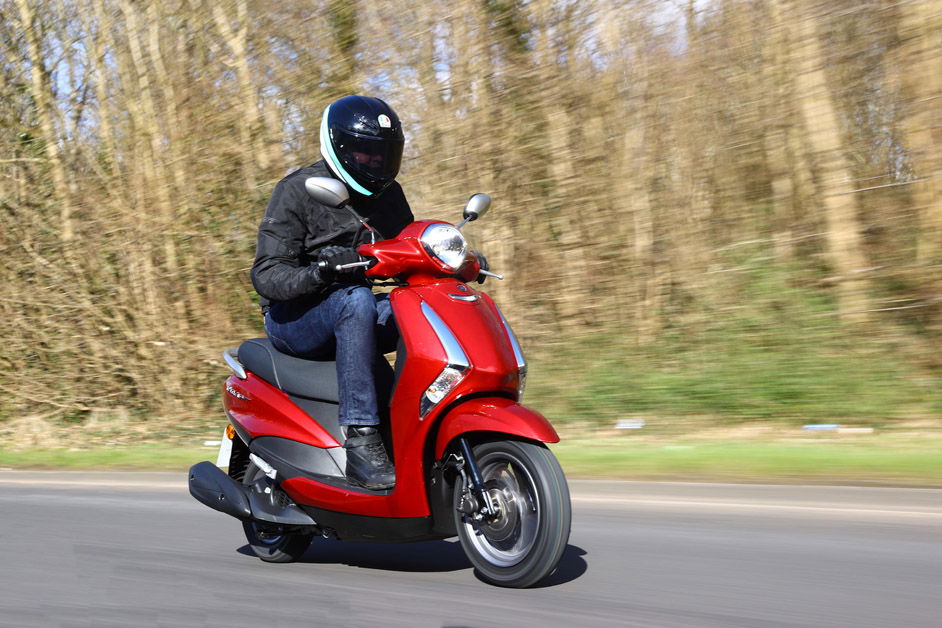
.jpg?width=1600)
